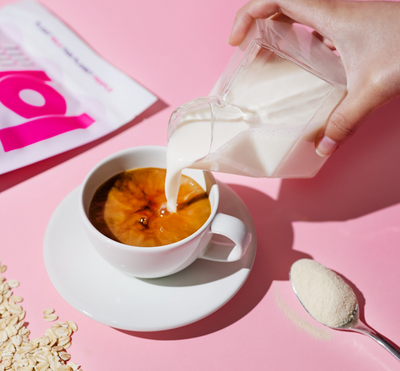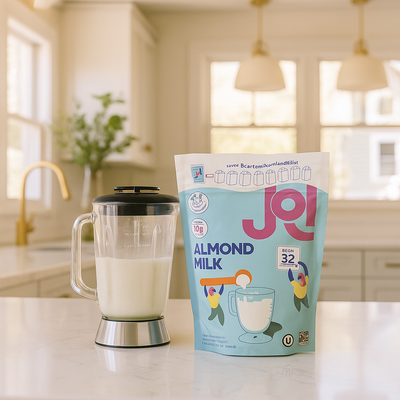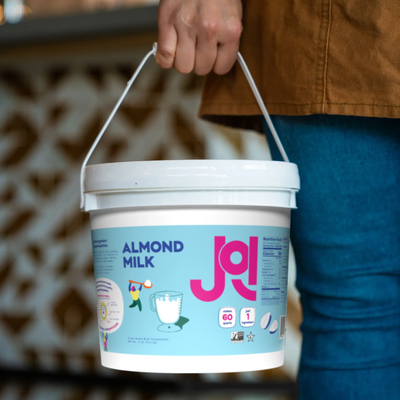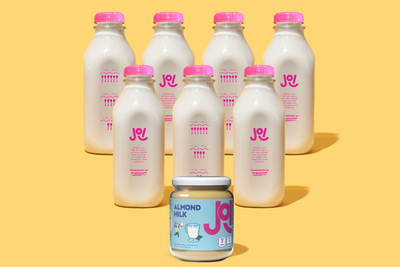Healthy Eating On A Budget: 8 Tips To Eat Well Without Breaking The Bank

Healthy Eating On A Budget: 8 Tips To Eat Well Without Breaking The Bank
Aug 14, 2020 | By JOI team
By Carolina Schneider, MS, RD
Healthy eating doesn’t have to be expensive. In fact, many of the world’s healthiest foods are very affordable (think staple foods: oats, rice, beans, bananas, onions, potatoes). But we can’t deny that the word on the street is that healthy foods equal a high grocery bill (looking at you, spirulina powder), while convenient or “junk” foods are a bang for your buck. But your wallet shouldn’t stand in the way of you having a healthy meal; all it takes is knowing how to shop smart. And yes, although we believe that investing in nutrient-dense foods is a great way to invest in your long-term health, we understand that sometimes the budget is tight and there’s no room for fresh cherries or organic avocados.

Before we get into the tips and tricks to shop smart, it’s important to review what a healthy, balanced meal looks like. When visualizing your plate, make a mental note that half of it should be filled with vegetables, while the other half is broken into two: one-fourth for a lean protein, and one-fourth for the whole grains. So what does that look like? Here are some examples:
Half of the plate: may include raw or cooked vegetables, of any kind and any color. The more variety, the better. This may look like a leafy greens salad with tomatoes, carrots, and cucumbers. Or a variety of roasted vegetables seasoned with olive oil and spices. Or perhaps the veggies you add into your wrap or sandwich.
One-fourth of the plate: muscle-building proteins. These could include plant-based or animal-based proteins. As a vegan I like to go for legumes like beans and lentils, organic tofu, and veggie patties. And yes, a fourth of your plate is a good measure, no need to overdo on proteins.
One-fourth of the plate: whole grains. These could include brown rice, quinoa, farro, whole wheat pasta, whole wheat bread or wraps, amaranth, millet, rye, buckwheat, bulgur wheat, spelt, or oats. Whole grains are an important source of carbohydrates, minerals and dietary fiber. 
Besides ensuring that you are getting your daily nutrients, planning your meals prior to your grocery run is a smart way to avoid spending money on things you don’t necessarily need. Another tip: do not go grocery shopping when you’re hungry. Trust us, you will end up with fresh baked cookies from the bakery. Now let’s get down to business, here are our best tips to eat healthy while on a budget:
1. Have A List
Go grocery shopping (and have a list). Buying your own food versus eating out is a huge money saver. We know you’re currently stuck at home ordering from an app, but those delivery fees, taxes, and meals quickly add up. There is no denying it; grocery shopping is still the cheapest way to get your meals. However, make sure you make a list of what you’ll need for your meals... and stick to it! Grocery shopping can get expensive if you end up stocking up on processed snacks, candy, baked goods, or making impulsive purchases because you're hungry (or hangry). These foods don’t necessarily add to your daily nutrition, and they will certainly add to your total at the cash register.
2. Buy Frozen Fruits and Vegetables
Frozen produce is not only cheaper, but it also lasts longer and may be more nutritious. Yep, you heard it right! Studies have shown nutrient retention of frozen vegetables to be equivalent to, and in some cases higher than their fresh counterparts. Frozen vegetables should be on everyone’s grocery list as they provide an easy and quick way to get more nutrient-rich foods into your diet. Simply toss them in the microwave (which, by the way, is a great cooking method to retain their nutrients), add them to your meals, or enjoy them as a snack.
3. Buy in bulk
If you have a wholesale membership, that’s where you should be getting most of your food. The prices are significantly cheaper, especially when it comes to fresh and frozen fruits and vegetables, dry whole grains, legumes, canned meats, nuts, seeds, dried fruits, eggs and condiments. However, you don’t need a membership to buy food in bulk. Several grocery store chains now offer the option to purchase by weight when it comes to nuts, seeds, legumes, grains, cereals and dried fruits, providing a much more affordable option to the pre-packaged versions of those items. Pro tip: when buying nuts, go for pre-chopped ones as they are a lot cheaper than whole nuts. 
4. Go for legumes
Want to save money on protein? Legumes such as beans, peas, lentils and chickpeas are great sources of plant-based protein, minerals and excellent sources of dietary fiber. What’s more, they are very inexpensive; especially when compared to animal sources such as meat, poultry and fish. They are also shelf-stable when dry or canned, and a convenient option to have in your pantry when you’re looking for a quick healthy meal. Whether you’re buying dry legumes to cook from scratch, or canned ones, your wallet will be happy.
5. Choose produce in season
Nowadays, we are lucky. We have most fruits and vegetables available to us year-round. However, buying your produce based on the season can still cut costs. Since fruits and vegetables are more plentiful during their respective seasons, they are cheaper during those months. It’s the basic principle of supply and demand. You will notice that peaches are far more expensive in cold months than in warmer ones. Plus, besides being cheaper, seasonal produce is usually fresher and more flavorful.
6. Buy Whole
When it comes to produce, skip the pre-cut, pre-washed, pre-chopped kinds. These are far more costly since you usually pay a premium for convenience. Instead, buy the whole produce and wash and cut yourself. Making a salad? Go for the head of lettuce instead of the salad mix. Looking for veggies to snack on? Skip the baby carrots-- buy whole carrots and chop them at home
7. Don’t Spend Extra On “Organic”
Unless necessary. Every year, the Environmental Working Group (EWG) establishes a “Shopper’s Guide to Pesticides in Produce.” It includes a list of crops with the highest use of pesticides (referred to as the Dirty Dozen) and the ones with the lowest use of pesticide (referred to as the Clean Fifteen). So, next time you’re willing to spend the extra dollar on organic avocados, make sure you check the list. (By the way, avocados are number-one on the Clean Fifteen list, so it may make sense to go for conventional). Another tip: most produce with thick skin, or with a peel are more effective at keeping pesticides out.
8. Add Canned Foods To Your Shopping List
Canned foods have a bad rep, that’s because many of them contain high amounts of sodium, preservatives, added sugars and/or oils. However, let’s not discredit the many canned fruits, vegetables and legumes that allow us to have a shelf-stable healthy option while saving some cash money. Look for fruits that are canned in their own juices and do not contain added sugars or syrups. For vegetables and legumes, look for those with no salt added. If not available, rinse the veggies thoroughly with water to remove excess salt. Now the superstars of canned foods are canned tuna and salmon, which besides being great sources of lean protein, are excellent sources of omega-3 fatty acids. 
How JOI Can Help Your Wallet
Did you know that one 15-ounce jar of JOI makes 27 servings of nut milk? Plus, it’s shelf-stable, so no waste there. It also requires less trips to the grocery store for milk. In fact, it requires no trips to the grocery store since it gets delivered to your home. Ounce for ounce, plant milk made with JOI is comparable to mass-produced, store-bought plant milk brands. And even better, it’s a single ingredient, higher quality, more nutrient-dense option. Talk about bang for your buck, uh?












 CHECKOUT
CHECKOUT